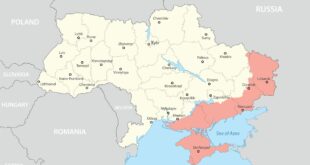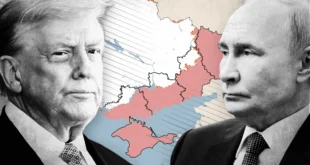Arms, energy, Iran, Ukraine peacekeepers and tri-multipolarity all likely on the table when Putin heads to Delhi
Indian Prime Minister Narendra Modi shakes hands with Russian President Vladimir Putin during a meeting on the sidelines of the 11th BRICS Summit in Brasilia, Brazil, on November 13, 2019. Photo: Sputnik / Mikhail Metzel
Russian Foreign Minister Sergey Lavrov confirmed that preparations are underway for Putin’s reciprocal trip to Delhi after Modi visited Moscow last summer as the first foreign trip of his third term.
Readers can review the outcome of their most recent summit here, while the present piece will forecast what they might discuss during their next one, the date of which has yet to be determined.
Given their shared enduring interests as well as the latest international developments, they’re expected to discuss:
1. Arms
“Russian-Indian Defense Ties Are Evolving With The Times”, having moved beyond their prior transactional relationship to the sharing of Russian technologies to help develop India’s domestic military-industrial complex.
The generalities of this will likely be discussed in the context of their newly updated military pact, as will the specifics as they relate to India’s planned procurement of jointly produced 800-kilometer-range BrahMos supersonic cruise missiles and its interest in Russia’s Su-57 jets.
2. Energy
India has become one of Russia’s top energy partners since 2022, which it plans to remain as proven by the historic 10-year-long oil deal that they agreed to late last year and in spite of the US’ latest sanctions.
The nascent Russian–US “New Déeente” could even see India become a major investor in the Arctic LNG 2 megaproject depending on how the phased lifting of American sanctions unfolds. That could importantly replace China’s lost role, thereafter, its companies withdrew under US sanctions pressure.
3. Iran
The reinstatement of Trump’s “maximum pressure” policy on Iran threatens the economic viability of the North-South Transport Corridor upon which Russia and India plan to rely for scaling real-sector trade.
Nevertheless, the nascent Russian-US “New Detente” could lead to Russia brokering an Iranian-US “New Detente” as suggested by two top Kremlin officials, the possibility of which Putin might discuss with Modi since Indian support for this proposed process could be pivotal for getting Iran to agree.
4. Peacekeepers
Putin’s recent proposal for the UN to take temporary control over Ukraine would require the participation of that global body’s peacekeepers, of which India is one of the largest contributors, so it would be sensible for him and Modi to discuss this.
The same holds true for the scaled-back alternative of a demilitarized “Trans-Dnieper” region that was informally suggested here or even just the basic idea for UN peacekeepers to monitor and enforce a ceasefire or armistice along the existing Line of Contact.
5. Tri-Multipolarity
And finally, a new paradigm in bilateral relations is needed at this historic moment in the global systemic transition, which could see Putin and Modi agree to jointly advance tri-multipolarity.
This concept was elaborated on in the preceding hyperlinked analysis but boils down to Russia and India creating a third pole of influence separate from the American and Chinese superpowers.

 Geostrategic Media Political Commentary, Analysis, Security, Defense
Geostrategic Media Political Commentary, Analysis, Security, Defense





